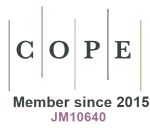Downloads
How to Cite
Romagnoli, G. G., Toniolo, P. A., Migliori, I. K., Caldini, Élia G., Ferreira, M. A., Pizzo, C. R., Bergami-Santos, P. C., & Barbuto, J. A. M. (2013). Tumour Cells Incorporate Exosomes Derived from Dendritic Cells through a Mechanism Involving the Tetraspanin CD9. Journal of Circulating Biomarkers, 1(1). https://doi.org/10.33393/jcb.2013.2032
Issue
Section
Original research article
Statistics
- Abstract views - 769 times
- PDF downloads - 616 times
Sign up
banners150
Most popular articles in the last 30 days
-
206
-
160
-
157
-
152
-
97









